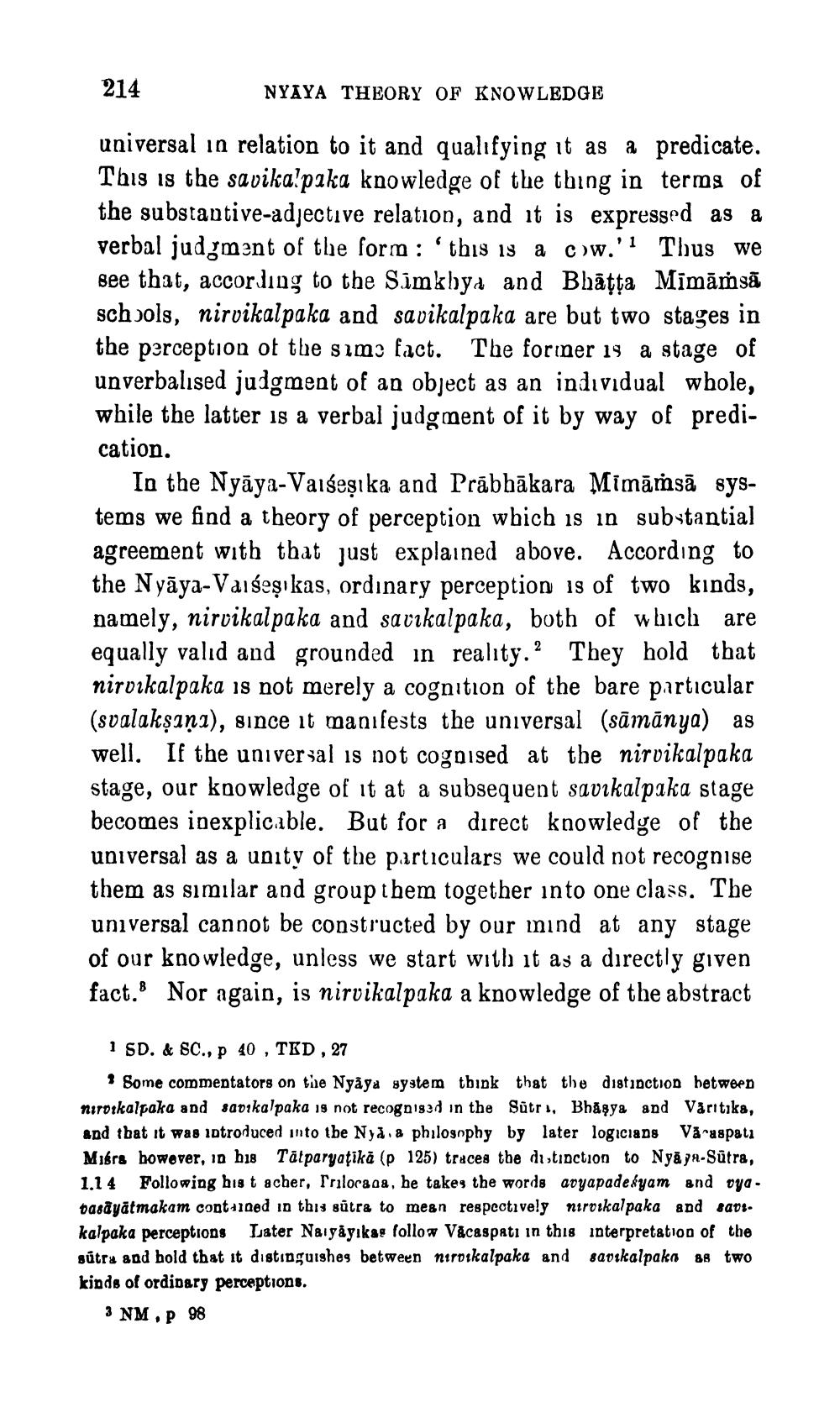________________
214
NYAYA THEORY OF KNOWLEDGE
universal in relation to it and qualifying it as a predicate. This is the savika!paka knowledge of the thing in terms of the substantive-adjective relation, and it is expressed as a verbal judgment of the form : 'this 18 a cw.'' Thus we see that, according to the Sīmkhya and Bhāțţa Mimāṁsā schbols, nirvikalpaka and savikalpaka are but two stages in the perception of the sims fact. The foriner is a stage of unverbalısed judgment of an object as an individual whole, while the latter is a verbal judgment of it by way of predication.
In the Nyāya-Vaiseșika and Prābhākara Mimāṁsā systems we find a theory of perception which is in substantial agreement with that just explained above. According to the Nyāya-Vaiseşı kas, ordinary perception is of two kinds, namely, nirvikalpaka and savikalpaka, both of which are equally valid and grounded in reality. They hold that nirvikalpaka is not merely a cognition of the bare particular (svalakşıņa), since it manifests the universal (sāmānya) as well. If the universal is not cogorsed at the nirvikalpaka stage, our knowledge of it at a subsequent savikalpaka stage becomes inexplicable. But for a direct knowledge of the universal as a unity of the particulars we could not recognise them as similar and group them together into one class. The universal cannot be constructed by our mind at any stage of our knowledge, unless we start with it as a directly given fact. Nor again, is nirvikalpaka a knowledge of the abstract
1 SD. & 6C., p 40 , TED, 27
* Some commentators on the Nyåya system think that the distinction between nirotkalpaka and sadikalpaka is not recognised in the Sūtrı, Bhagya and Våritika, and that it was introduced into the Nyå.a philosophy by later logicians Våraspati Miørs however, 10 h18 Tātparyaţikā (p 125) traces the distinction to Nyaya-Sutra, 1.14 Following his t acher, Trilocaoa, he takes the words adyapadekyam and oya. pasāyātmakam contined in this sūtra to meen respectively nirvikalpaka and sads. kalpaka perceptions Later Naigåyikas follow Vacaspati in this interpretation of the sútry and hold that it distinguishes between nirdikalpaka and savikalpaka 88 two kinds of ordinary perceptions.
3 NM, P 98




